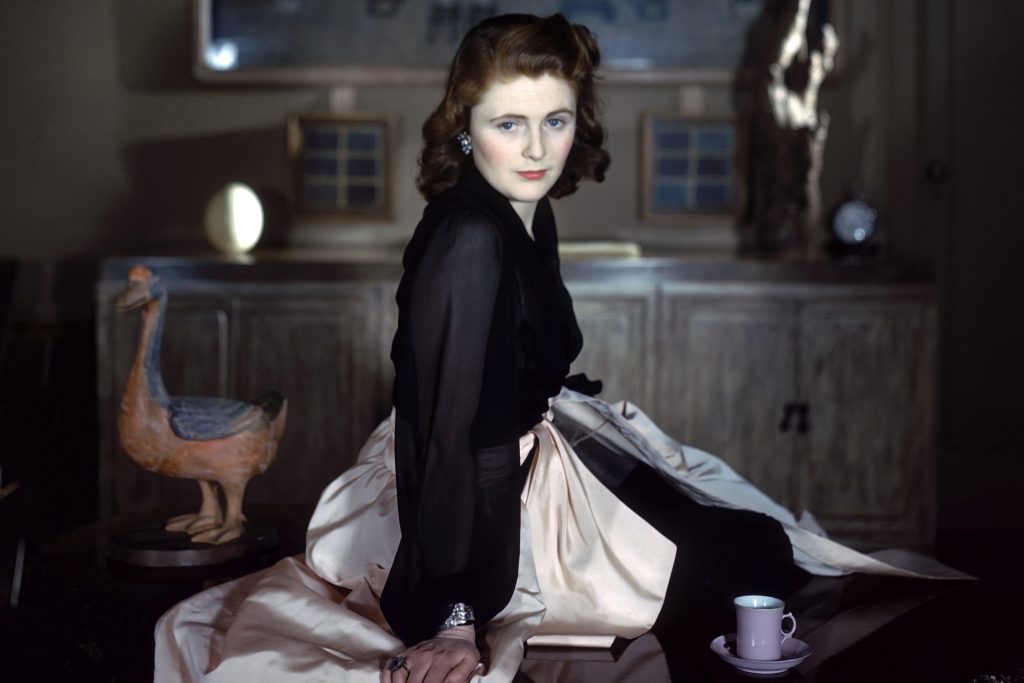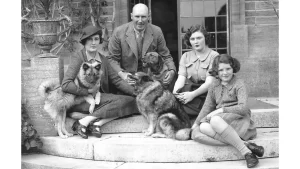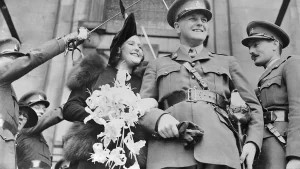
Pamela Harriman, often dubbed “the greatest courtesan of her era,” is a figure shrouded in controversy and intrigue. The daughter-in-law of Winston Churchill, she played a pivotal role in the political landscape of the 20th century, moving from British aristocracy to a powerful position in Washington as the U.S. ambassador to France. Nearly three decades after her passing, Harriman continues to provoke debate. Was she a clever power broker or merely a manipulative figure leveraging her charm for influence?
Born in 1920 to a financially struggling baron, Pamela Beryl Digby Churchill Hayward Harriman was groomed to “marry well.” Her first London season in 1938 did not yield a suitable match, but in 1939, she caught the eye of Randolph Churchill, Winston’s only son. Their whirlwind romance culminated in a hasty marriage, as Randolph feared for his life in the impending war. Despite his lack of genuine affection, their union provided Pamela with access to the inner circles of power.
With Churchill becoming Prime Minister in 1940, Pamela found herself at the heart of wartime politics. Recognizing the importance of American support against the Nazis, Churchill saw in Pamela a strategic asset. She used her charm to win over influential Americans, positioning herself as an essential player in garnering support for the British cause. Her connections proved invaluable during a time when the U.S. was hesitant to join the war.
Pamela’s charm extended to figures like Averell Harriman, the U.S. envoy sent to oversee the Lend-Lease program. Their affair allowed her to gather insights into American political sentiments, which she would later share with Churchill during their late-night card games. While some critics, like Roger Lewis, dismiss her influence as exaggerated, others, including historian Frank Costigliola, argue that her relationships provided vital intelligence and strengthened the transatlantic alliance.

Beyond her romantic entanglements, Pamela’s personal life was marked by a series of high-profile relationships, including liaisons with celebrities and influential men of the time. Despite the public scrutiny she faced, her actions were not uncommon in a society where power dynamics often intertwined with personal relationships. In a wartime context, her role was further amplified, with her “pillow talk” reaching the ears of leaders and potentially shaping policy decisions.
After her divorce from Randolph Churchill, Pamela’s life in Paris involved a glamorous social circle filled with wealthy suitors. While she enjoyed the lavish lifestyle financed by her lovers, she never secured a lasting marriage until her relationship with Leland Hayward, a prominent producer. Their union was characterized by both love and challenges, especially as Hayward’s career began to falter.
Following Hayward’s death, Pamela rekindled her relationship with Averell Harriman, marrying him and becoming a notable figure in Washington society. She transitioned into a political powerhouse, using her resources to support Democratic candidates, including Bill Clinton and Joe Biden. Her efforts culminated in her appointment as ambassador to France, where she blended her social prowess with political acumen.

Critics have often labeled Pamela as using her sexuality to advance her political ambitions, creating a narrative that many find problematic. As a result, discussions about her legacy can feel polarized, as some view her as an opportunist while others recognize her as a savvy strategist in a male-dominated world.
Sonia Purnell’s biography, Kingmaker: Pamela Harriman’s Astonishing Life of Power, Seduction, and Intrigue, offers a nuanced perspective, capturing both her allure and the criticisms she faced. The varied reactions to the book reflect ongoing societal debates about women’s roles in power, sexual agency, and the double standards that persist.
Pamela’s own reflections reveal a complex self-image. In a 1992 interview, she described herself as a “backroom girl,” content to influence from the shadows rather than seeking the spotlight. This self-awareness raises questions about how we judge women like Pamela, whose ambition and strategies were shaped by the era in which they lived.
In the end, Pamela Harriman’s life serves as a mirror reflecting our attitudes toward power, gender, and morality. Whether seen as a cunning strategist or a “shameless” seductress, her story invites us to reconsider the narratives we create around influential women in history.








